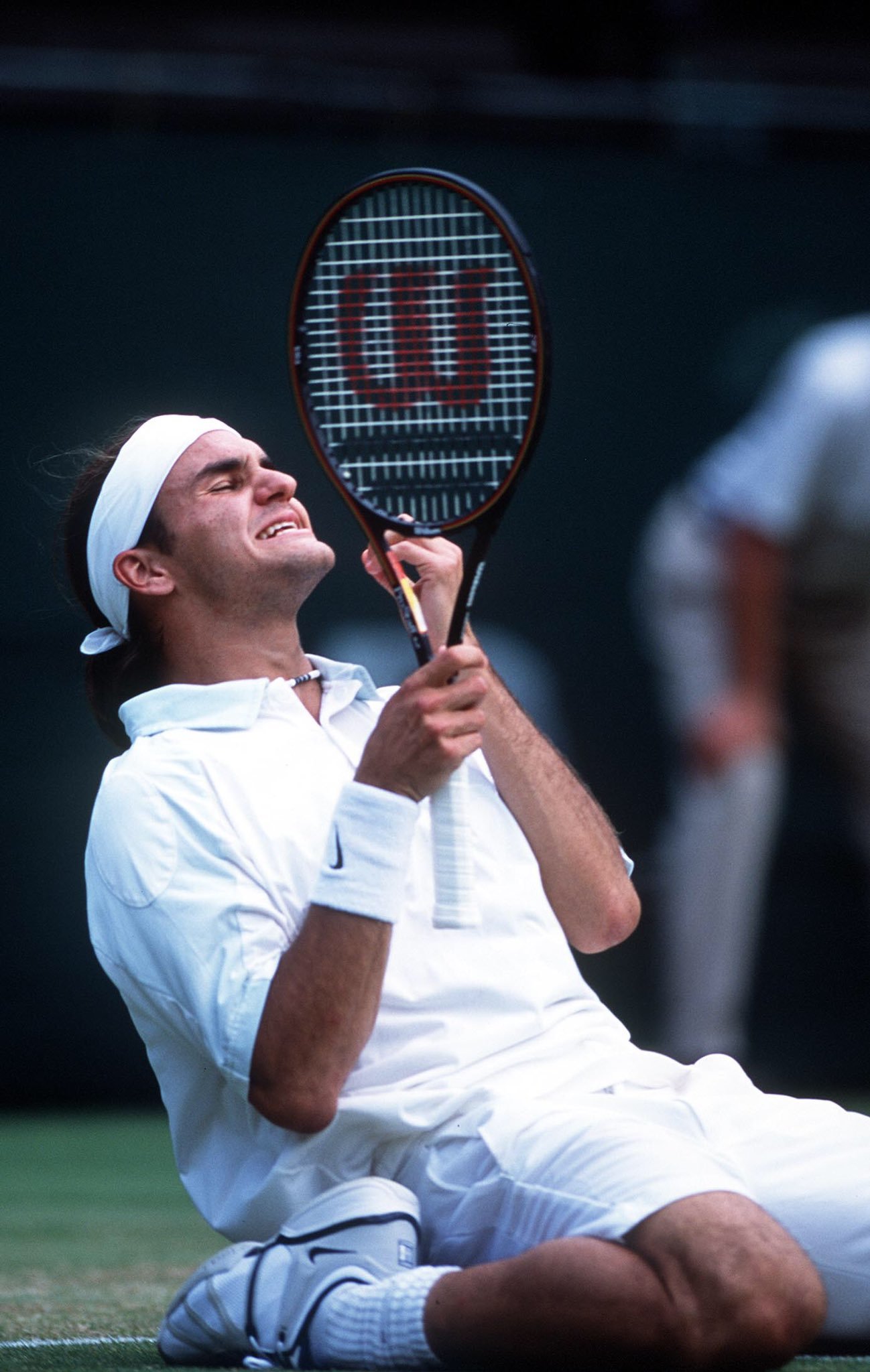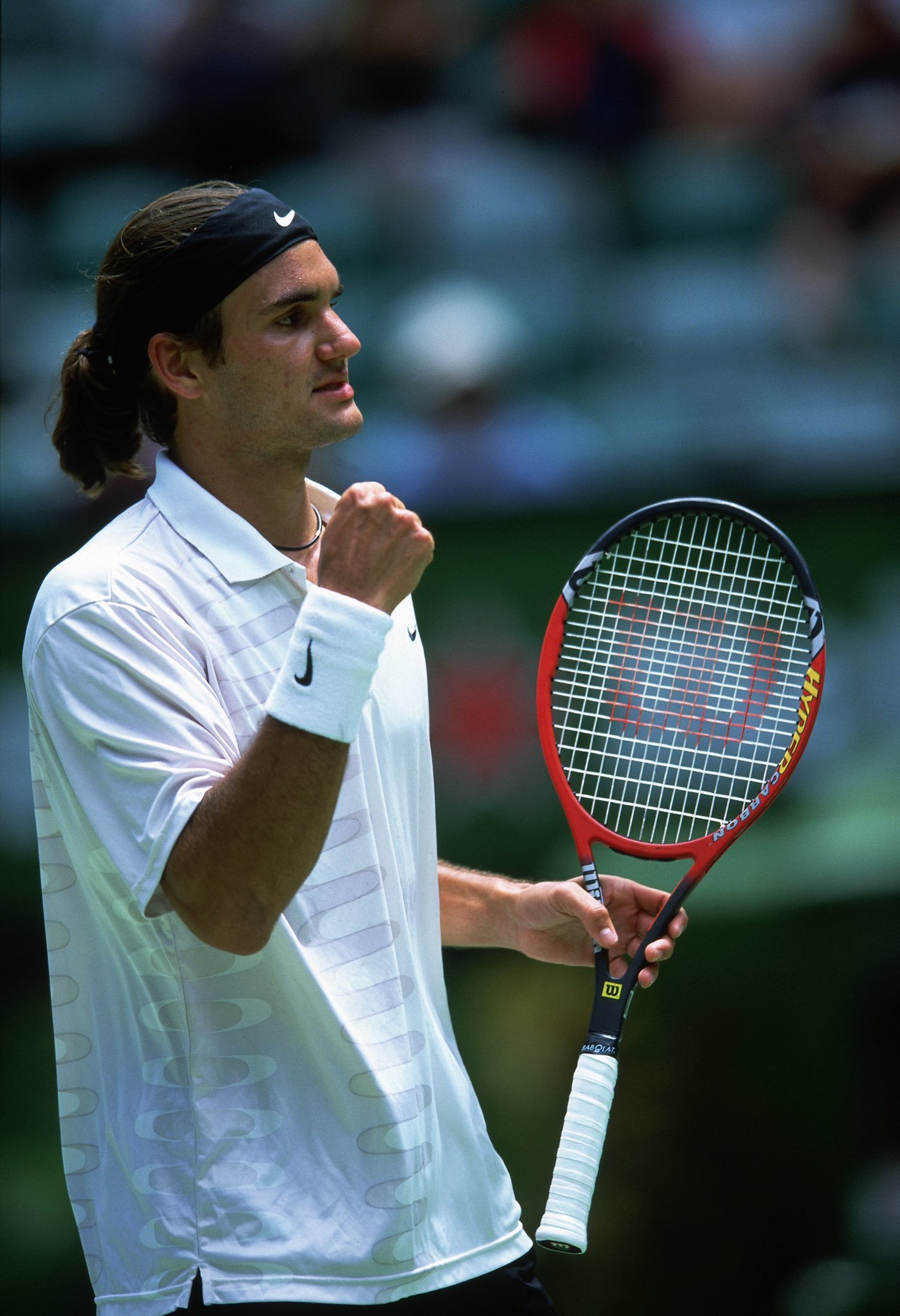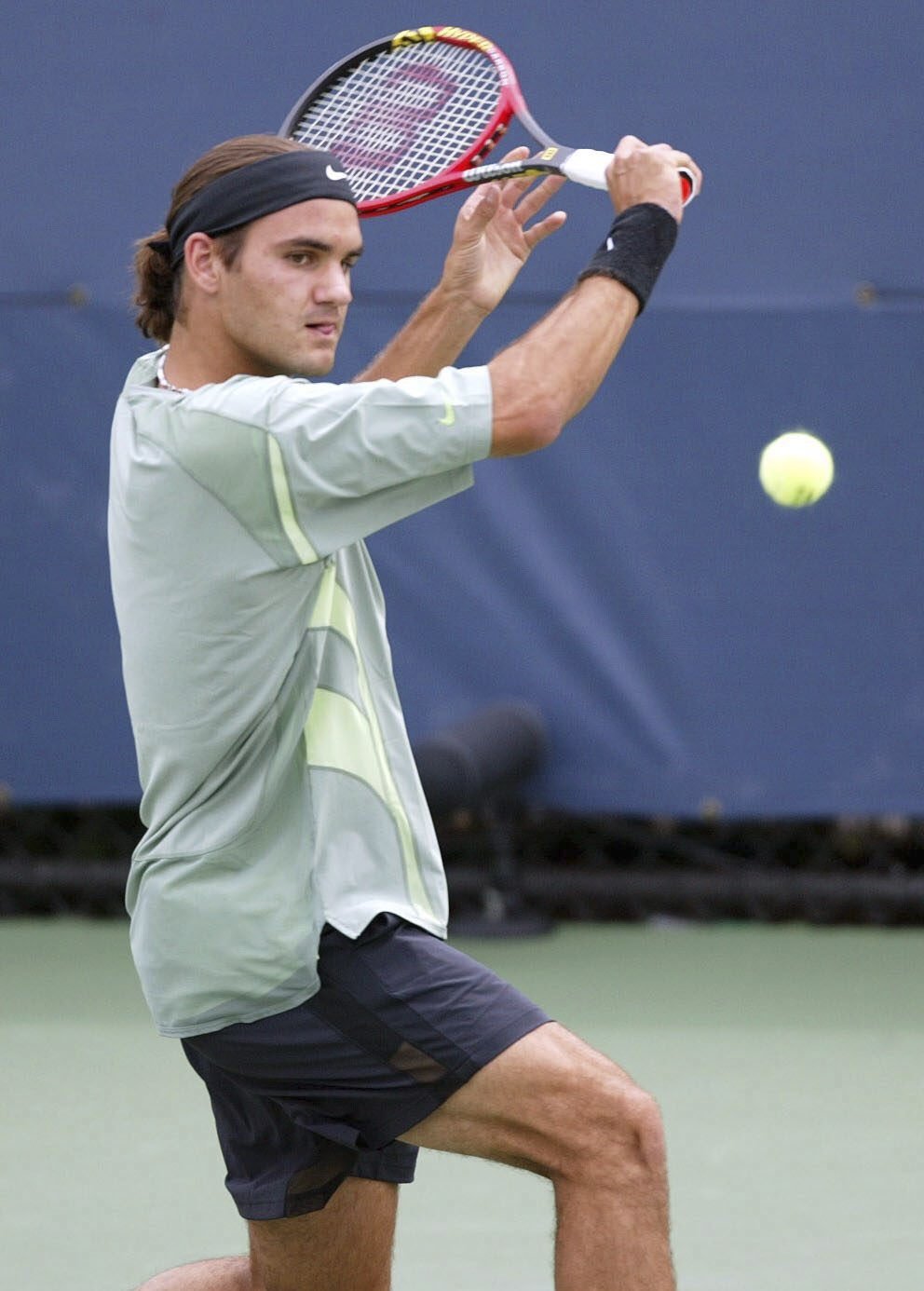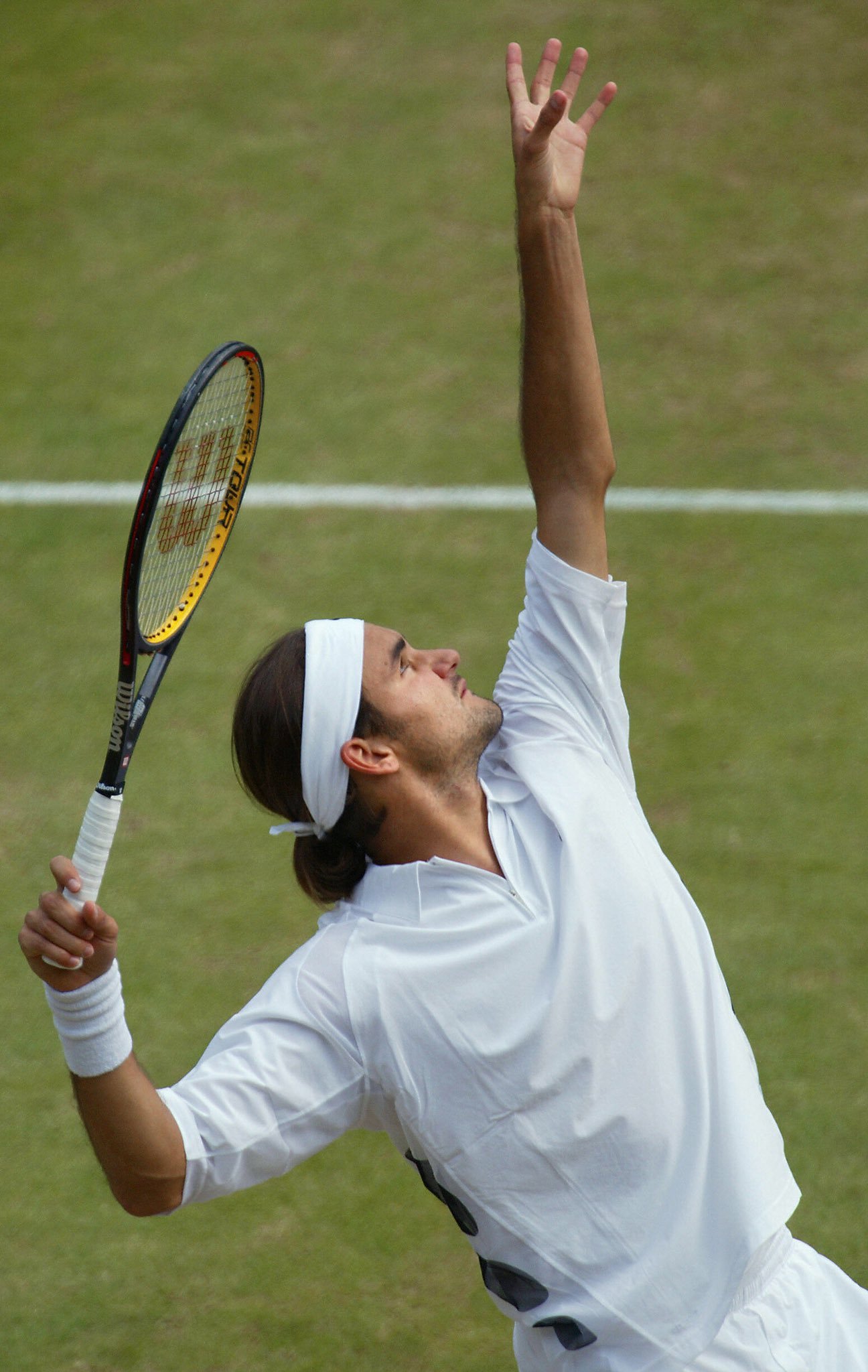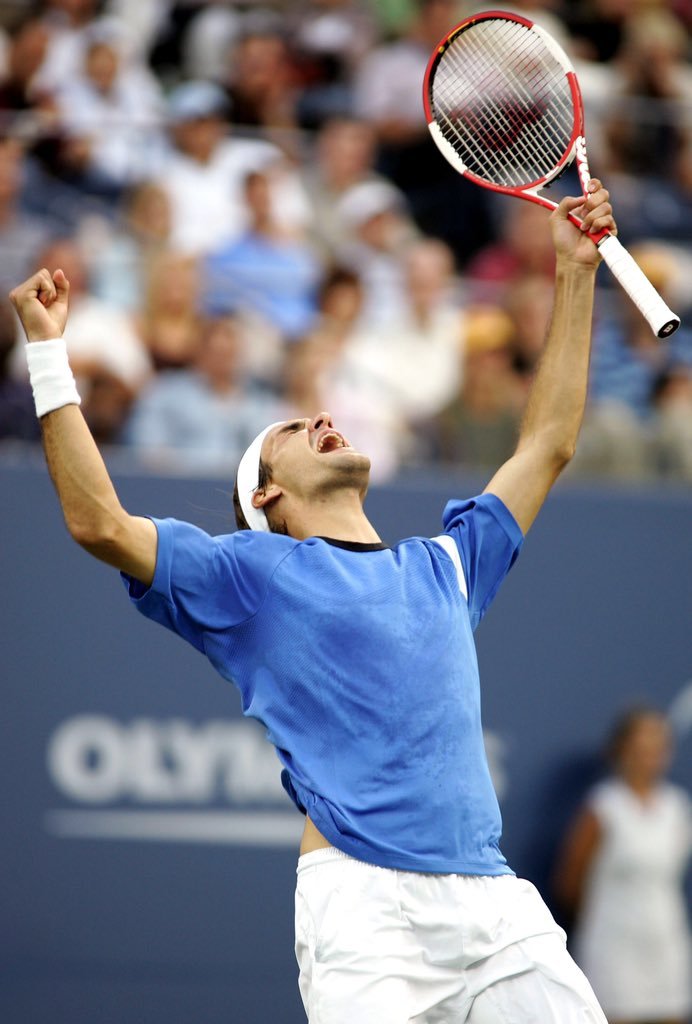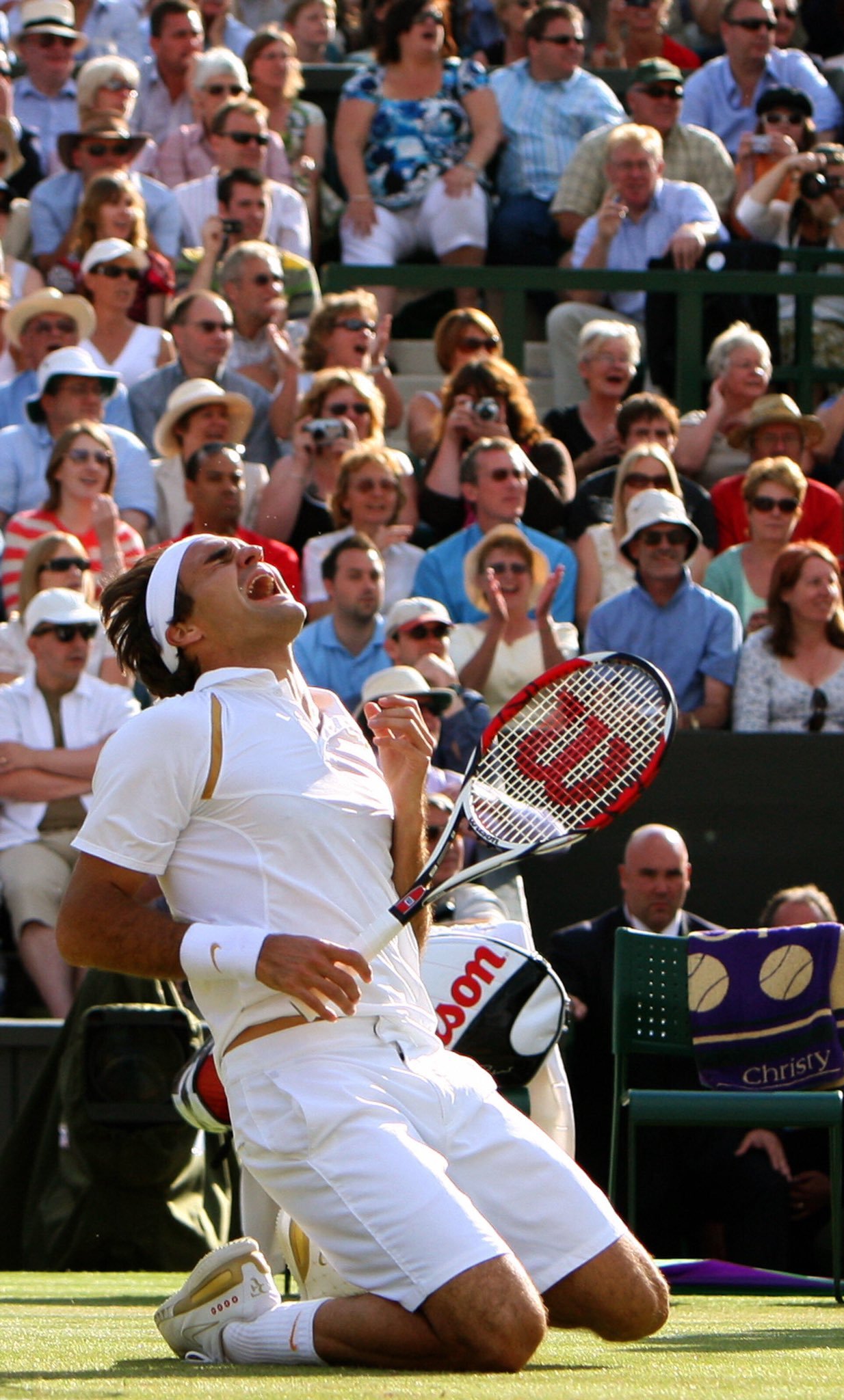THE ULTIMATE GUIDE TO FEderer’s RACKET
A Comprehensive Guide to Federer’s Racket Specs, History, and Specific Modifications.
All Sources Included at the Bottom
Last Updated: 1/25/2022
INDEX
INTRODUCTION
Roger Federer is probably the only top player that plays with an essentially identical racket as he endorses. I cannot emphasize how much speculation and “discussion” there was back in the day over his racket. When Roger made the transition to the RF Pro Staff Autograph 97, this changed everything. You basically have his racket minus some customizations. This makes copying his specs easier than ever before. Whether you should, however, is another topic. But these days it’s far more accessible to the common player as there are plenty of variations of his racket. It was a tougher sell to recommend a heavy, 90 sq inch racket to a beginner intermediate. But now there are 100 sq inch models as well as lighter versions. So basically anyone can be Roger Federer now.
“Should I use Federer’s Racket ?”
Probably not.
But that won’t stop you.
RACKET SPECS
Endorsed: Pro Staff RF97 Autograph v13
Strung Weight: 366 g
Balance: 31.5cm, 9 pts HL
Stiffness: RA 68
Swingweight: 340 kgcm2
Weight Modifications
3 grams of lead at 12 o’clock in the tip
Silicone injected in the Handle.
Keep in mind that many sources contradict each other, and the exact values will depend on where you got your information from. The following seems to line up the most commonly, however, keep in mind it may not be 100% accurate. You can see at the end of the day, it is very close to the retail stock version.
FEDERER'S RACKET VS CONSUMER STOCK
Strung Weight is heavier. His weighs 366g vs 357g Stock.
It is commonly speculated that Roger’s racket is depolarized.
Lead Placement: 3 grams of lead at 12 o’clock in the tip
Silicone in the handle.
Impossible to physically measure the silicone once inside the handle. We can technically do the math, but I’d be cautious at being too precise because he uses a custom pallet that is said to be lighter than retail. So there are many variables involved.
If you were mimicking his set up I would put 3g of weight at the handle.
Identical Balance & Stiffness Rating
STRINGS
Mains: Wilson Natural Gut 16 at 27kg
Crosses: Luxilon Alu Rough 16L at 25.5kg
This hybrid is also sold together as Wilson Champion’s Choice
Federer will make slight tension modifications based on conditions. 1.5 kg difference between mains and crosses, no matter what.
GRIP
Size: 4 & 3/8 inch | Size 3 | 111 mm
Main Grip: Leather Priority One grip with custom molded handle
Over Grip: Wilson Pro Comfort
LEAD PLACEMENT
Federer places 3g of lead at the tip of the racket @ 12 o’clock and silicone in the handle.
Polarized Setup
A polarized set up is when weight is placed at both the top and bottom (the two poles) of the racket. On the contrary, a depolarized set up is when weight is placed in the middle of the racket at any variation.
Keep in mind for this guide, I don’t want to get into too much detail regarding the physics, so there is a great deal of simplifying. But in short, a polarized set up will lead to:
Lower Swing Weight (more maneuverability)
More Top Spin
Less Stability
In my opinion, this is one of most significant modification to how a racket will play. Therefore if you are interested in Federer’s set up, polarizing your racket should be one of top priorities. I would put 3g of lead and 3 g in the handle to mimic his set up.
STRING SAVERS
Purpose
String savers are designed to preserve the length of the string life by acting as a buffer between the mains and crosses. This was especially common when gut strings were so predominant. These days, however, string savers are far less common, perhaps even on the brink of being obsolete. Nevertheless, they are still a consistent part of several high profile players, such as Grigor Dimitrov, Pete Sampras, and obviously Roger Federer.
However, the most significant reason why they are used by these Pro’s is that they change the entire feel of the racket very similarly to a dampener. Based on an interview, Federer explains that he used string savers because of the prevalence of gut in the start of his career. The gut would wear off within 15-25 minutes of play and were fairly expensive. With any professional tennis player, consistency is everything, and it makes sense that he would continue to play with them throughout his career.
Federer’s Placement
Each strung racquet had a total of 10 string savers inserted, in a crisscross pattern across the five center main strings and the fourth and sixth cross strings.
- Priority One Interview Conducted by Tennis-Warehouse
AKA just look at the picture 👉🏽
POWER PADS
Federer places 3 cork power pads at the throat of the racket.
Power pads are usually placed between the grommet and the string at the throat of the racket. Contrary to it’s name, they do not give you power. They have a very similar effect as string savers and dampeners. They were often used to preserve high tension of gut strings. Federer specifically mentions Sampras & Philippoussis as players that utilized power pads and likely influenced his own use. He follows up by stating that he thinks its a little odd that he still uses them, but they alter the feel of the racket and keeps them for nostalgic reasons.
MyTennis Channel. An exclusive German interview with Roger Federer where he details some of his racket set up. Highly Recommended.
RACKET HISTORY
Pro Staff 85 6.0
Hyper Pro Staff 6.1 (Silver)
Hyper Pro Staff 6.0 (Yellow)
Pro Staff Tour 90
Wilson nSix-One Tour 90
Wilson K Factor Six One Tour 90
Wilson Six.One Tour BLX
Wilson BLX Pro Staff Six.One 90
Wilson Prostaff RF97 Autograph
Laver Cup Blue & Red Edition
Pro Staff RF97 Autograph v13
PAINT JOBS
This is a fairly divisive topic — be warned. So much so, that it has stirred enough fiery arguments to start another World War.
The general rule of thumb is that players value consistency and are both unwilling and uninterested in keeping up with the constant cycle of new rackets. This is the main reason why Pro stocks exists, because while the companies need to sell, the Pros need consistency for results.
So it’s fairly safe to say that Federer has used paint jobs for various rackets over the years. Where we get into speculative territory is identifying specific models and time periods over Federer’s long career.
Speculation begins
Some of the safe bets are the Pro Staff 85 when his career first started and most recently when he worked with Wilson to modernize his racket, the RF autograph 97. He almost 100% used these rackets and were very close to the retail version apart from customizations.
Hyper ProStaff 6.1 Silver was almost certainly a paintjob, as Federer would never jump to a 95 from 85 square inch.
A source reported that during Roland Garros 2002 Federer transitioned to a 90 square inch racket, but was officially made in 2003 with the Pro Staff Tour 90.
It get real tricky during the 90 square inch era. It’s a little odd that Federer would be willing to change from technology to technology, ie: Ncode, Kfactor, BLX, etc. I’m pretty certain he did not make every transition so a paint job is for sure within these technologies. But the question is: which one did he settle with for all those years? Did he make changes? A couple? No one really knows.
Once the the Prostaff RF97 Autograph was released all speculation mostly dropped. There was a clear purpose to change and Wilson had every reason to market it as his actual racket.
Most recently, the v13 removed countervail which was part of the original RF97. More likely than not, Federer was not going to change technologies fresh off an injury for his comeback.
SOURCES
Roger Federer, himself, on his string tension
German Interview with Roger Federer on his racket history. Highly Recommended 🔥
Tennis-Hands at TW, translates it for us:
Avedissianj1 from TW, AKA Tennis Spin
Greg’s Racket Service : Obtained a racket used in Montreal, Laver Cup, US Open, Shanghai in 2017
Wilson Tennis Official, Twitter, regarding Racket History
Tennis-Warehouse, with an interview of Priority One regarding string savers.



